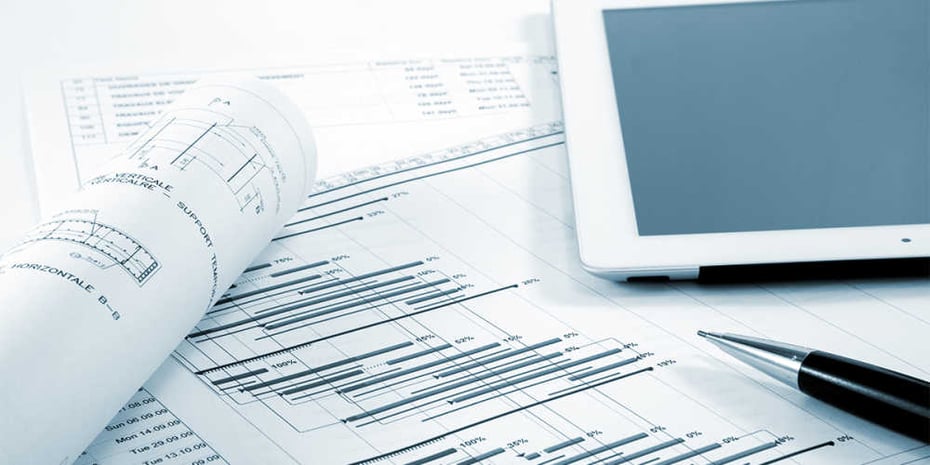Enhancing Process Efficiency: Engineer's Professional Strategies for Building And Construction File Monitoring
In the world of building layout and building and construction, the thorough monitoring of documents stands as a keystone for project success. These strategies not only ensure smooth project development yet additionally hold the vital to opening boosted performance and accuracy in the complex realm of building paper administration.
Secret File Organization Techniques
When taking care of building and construction papers, among the essential methods that architects employ is developing a organized and effective company system. This system generally involves classifying papers based on their kind, such as illustrations, specs, contracts, and allows. By producing distinct and clear groups, designers can rapidly locate details info when needed, conserving time and lessening errors in the building and construction procedure.
Within each classification, engineers even more arrange documents by making use of or creating subfolders numbering systems to represent revisions or versions (construction document management). This hierarchical structure guarantees that one of the most existing and relevant info is quickly obtainable while keeping a record of changes made throughout the project timeline
Additionally, engineers usually utilize digital document management platforms that offer features like keyword search functions, version control, and access restrictions to enhance organization and collaboration among project stakeholders. These tools streamline the document retrieval procedure, advertise real-time updates, and promote smooth interaction, eventually contributing to the general success of the building job.
Collaborative Platform Integration
To optimize document monitoring performance in building and construction jobs, designers seamlessly integrate collective platforms to boost interaction and improve coordination among task stakeholders. By leveraging collective platforms such as project monitoring software application, cloud-based storage systems, and interaction devices, designers can create a central hub for all project-related documents and interaction channels. These platforms permit employee to accessibility, evaluation, and collaborate on papers in real-time, decreasing delays and the danger of errors connected with standard document monitoring techniques.
Collective system integration likewise cultivates transparency and responsibility within the task team, as all stakeholders have visibility right into the most recent project updates and modifications. By systematizing communication and record sharing, architects can guarantee that all employee are functioning from the most up-to-date info, decreasing the chances of misunderstandings or disputes emerging due to outdated papers.
Moreover, collaborative systems enable seamless cooperation between designers, contractors, clients, and various other project stakeholders, advertising an extra cohesive and efficient task workflow. By breaking down communication obstacles and helping with details exchange, engineers can drive productivity and advancement in building jobs, eventually bring about successful project outcomes.
Variation Control Ideal Practices
Applying reliable variation control methods is important for preserving file Our site accuracy and consistency in building and construction tasks. By developing a clear system for handling revisions, project groups can make certain that everybody is working from the most current documents, minimizing the threat of errors and disparities during the building phase.
One of the key ideal techniques for variation control is to appoint special identifiers to every document variation. This can be accomplished by using a numbering system or day stamp that clearly indicates the order of alterations. By clearly identifying each iteration, employee can easily track the development of the paper and identify one of the most recent variation.

Automation Devices for Performance

File control software application, like Procore or PlanGrid, systematizes task documents, making it easily accessible to all stakeholders. These platforms allow for real-time partnership, version control, and automated backups, safeguarding versus information loss. In Addition, Structure Details Modeling (BIM) software program automates the generation of building and construction illustrations and ensures that changes are synchronized throughout all associated files.
Integrating automation devices with cloud storage services even more improves ease of access and security. By automating the document administration process, project teams can concentrate their time and initiative on value-adding tasks, inevitably enhancing efficiency and project outcomes.
Secure Information Monitoring Solutions
Properly handling and protecting job information is vital in the building and construction market to make certain confidentiality and honesty throughout the project lifecycle. Architectural companies can utilize encrypted cloud storage solutions to firmly address share and store job records with authorized workers.
In addition, utilizing digital civil liberties management (DRM) tools includes an added layer of security by preventing the unapproved distribution or replication of job records. Normal data backups are vital to minimize the risk of data loss because of unanticipated conditions like hardware failings or cyber-attacks. Collective systems with integrated protection features enable seamless communication and data sharing among job group participants while preserving information integrity.
Verdict
In conclusion, implementing essential file organization methods, integrating collective platforms, practicing version control best techniques, making use of automation devices, and adopting safe and secure information monitoring options are crucial approaches for boosting process effectiveness in construction document management. These experienced techniques can enhance procedures, enhance communication, ensure precision, and keep data safety and security throughout the construction task lifecycle.
In the world of architectural design and building and construction, the thorough management of documents stands as a keystone for job success. These strategies not only make certain smooth job progression yet also hold the vital to unlocking enhanced performance and accuracy in the intricate world of building file monitoring.
To enhance document monitoring effectiveness in construction jobs, architects flawlessly integrate joint platforms to boost communication and simplify sychronisation among task stakeholders. These platforms allow group members to gain access to, review, and work together on documents in real-time, minimizing delays and the danger of mistakes associated with typical record administration approaches.
Utilizing automation tools in building document administration considerably improves efficiency and improves procedures for project teams. construction document management.